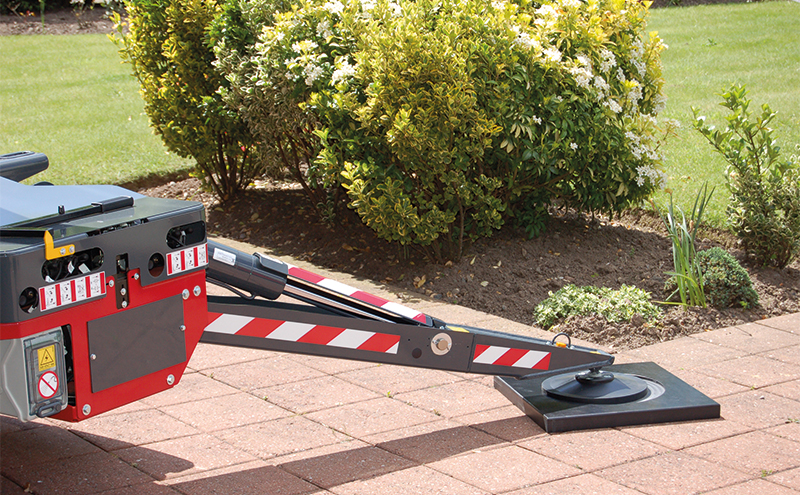
Access platforms must be as stable as possible if they are to be used safely and effectively. It is therefore vital to know how to accurately assess ground conditions – and understand what measures to take. Outriggerpads, a global supplier of spreader plates to the powered access industry, provides some advice
ACCESS platforms are great tools for enhancing both safety and productivity when working at height.
However, best practice begins from the ground up – always conduct a thorough site assessment. Here are some key points to consider:
ASSESS THE GROUND
Even if your access platform does not need to deploy outriggers or stabilisers, you should still inspect the ground conditions. The most common ground condition hazards that you might encounter include the following:
Un-compacted fill
This is the term for soil or other fill material placed into backfilled trench without being compacted. One tell-tale sign is visible cracks along the line of the trench.
Nearby excavations
Avoid using powered access platforms close to the edge of a trench or other excavation, as the sides could collapse without warning. If the machine needs to be used near to the edge of such a feature, IPAF recommends that a competent geotechnical engineer carries out an assessment before you allow the platform to be positioned, set up and operated.
Floors, cellars and basements
Many floors, cellars and basements are simply not designed to bear the weight of a mobile crane or a powered access platform. Take into account the strength of floors and location of cellars/basements before positioning a machine in this type of area.
Paved Areas
Looks can be deceiving! Paved areas can look deceptively strong, but the ground beneath them could well be weak. In particular, consider footpaths as suspect, because there is often weaker ground or shallow services hidden below.
Underground Services
Sewers, drains, manholes and gas and water mains can all be impacted by the weight of a platform. They can even collapse, causing the platform to become unstable or overturn.
Weather Conditions
Wherever you work, the weather can be a major factor. Heavy or prolonged rain can alter ground conditions and cause sinking of outriggers or wheels.
If you suspect that the ground supporting a platform is getting softer, you should make regular checks on the machine level and make any appropriate adjustments to both the outriggers and pads.
Also make regular checks when frozen ground is thawing out, since it can appear to be much firmer than it actually is.

STAY ALERT
All modern powered access platforms are fitted with level sensors. Pay attention to these indicators and act immediately if any alerts or warning lights are activated. If the level indicator tells you that you are exceeding the machine’s operating limits then you should immediately stop, lower the platform, and reset the machine until the indicators confirm that it is in a level position.
If you are on soft ground and fear that outriggers or stabilisers could sink during operation, make regular checks and adjust accordingly.
SPREAD THE LOAD
Always spread the load by using spreader plates, where required. The surface area of the ‘foot’ of an outrigger is often small, so it is important to spread the load in order to maximise stability. This enables the outrigger to withstand high pressures on gravel, soil and paved areas.
In addition, very poor ground conditions may require additional foundations, such as ground mats, timber mats, proprietary mats, steel grillages or concrete pads.
SPOILED FOR CHOICE
The market for spreader plates is pretty mature, meaning that there is now a huge array of outrigger pads from which to choose. This can cause a headache in itself, as you need to deploy the right spreader plates for the job.
Outriggerpads has created an online calculator for the International Powered Access Federation (IPAF), to help operators efficiently procure the proper pads.
The spreader plate calculator accounts for factors such as the maximum allowable ground pressure and the machine load per outrigger or wheel. It also helps operators identify where to find the relevant data on the access equipment itself.
Replacing the IPAF Ready Reckoner, the new calculator aims to provide more accurate results and be more user-friendly.
It is available as a web application from the IPAF website as part of its “Spread the load!” safety campaign.
This campaign calls for the proper assessment of ground conditions and the correct use of stabilisers, outriggers and spreader plates.
IPAF believes that spreader plates should always be used with booms when they deploy outriggers; and all other MEWPS that have outriggers, unless a risk assessment has specifically deemed them to be unnecessary.
MATERIAL CONCERNS
Spreader plates are an investment, so it is important to get value for money. Outrigger pads come in a variety of materials, such as wood, aluminium, steel and plastic.
We recommend heavy duty UHMW polyethylene, as it is lightweight, robust, and the pads retain their shape even under extreme vertical pressure. They are also water resistant and do not corrode or splinter.








